Proyecto Arqueológico Cerro Baúl
INTRODUCTION
In the sixth century A. D., a new state arose in the Ayacucho Basin of highland Peru. With an urban capital at the city of Wari, this expansive state would soon become the largest polity to cover Peru before the development of the Inca Empire. In fact, it has been argued that Inca politics and economics were based in the traditions of this earlier complex society.
The Wari polity rapidly became an empire, establishing large administrative centers in ethnically distinct, far-flung reaches of the Peruvian highlands. One of the first centers to be established outside the Ayacucho heartland was the colony of Cerro Baul, located at the southernmost point of Wari expansion and on the frontier with the Tiwanaku, a rival expansive state centered in the Titicaca Basin of Bolivia. The Moquegua Valley, where Cerro Baul is located, is the only valley to house both early Wari and Tiwanaku colonies that may have been contemporaneous and within visual range of each other.
PERSONNEL
Directors:
- Patrick Ryan Williams, Curator and Head of Anthropology, TFM, Wari-Tiwanaku interaction
- Donna J. Nash, Professor of Anthropology, UNCG and TFM Adjunct Curator in Anthropology, Wari houses
- Michael E. Moseley, Professor Emeritus of Anthropology, U. of Florida and former Curator in Anthropology, TFM
- Susan DeFrance, Professor of Anthropology, U. of Florida, zooarchaeology
- Nicola Sharratt, Professor of Anthropology, Georgia State University, Tiwanaku collapse
- Sofia Chacaltana, Professor, Unversidad Antonio Ruiz de Montoya, Project co-director 2012-, provincial Inka
Post-Doctoral Collaborators:
- Kirk Costion, U. Pittsburgh, Formative households
- David Goldstein, National Park Service, paleoethnobotany
- Benjamin Vining, Professor of Anthropology, U. Arkansas, GIS & archaeological survey
- Ana Cristina Londono, Professor of Geology, Lindenwood University, hillslope evolution
- Megan Hart, Professor of Engineering, U. Missouri-Kansas City, laser scanning analysis
Graduate Field Dissertators:
- Emily Baca M., University of Illinois - Chicago, Graduate Researcher, provincial Inka
- John Hicks, University of Illinois - Chicago, Graduate Researcher, GIS & archaeological survey
- David Reid, University of Illinois - Chicago, Graduate Researcher, Wari roads
- Beth Gravalos, University of Illinois - Chicago, Graduate Researcher, ceramic production
- Rachael Penfil, University of Illinois - Chicago, Graduate Researcher, warfare and collapse
- Corey Bowen, University of Illinois - Chicago, Graduate Researcher, Tiwanaku
- Ashley Vance, University of Illinois - Chicago, Graduate Researcher, ritual offerings
Colleagues & Past Collaborators:
- Johny Isla C., Project co-Director 1997-1998
- Mario Ruales Moreno, Project co-Director 2001-2004
- Ana Miranda, Project co-Director 2004
- Maria Rojas Chavez, Project co-Director 2006-7
- Manuel Lizarraga, Project co-Director 2010
- Monika Barrionuevo, Lab Director Emeritus
- Antonio Oquiche H., Museum Director Emeritus
- Patricia Palacios, Museum Director
- Adan Umire, Archaeologist
- Luis Gonzales, Ministry of Culture
- Pilar Escontrias, PhD Northwestern University, Inca and Colonial personhood
- Christopher Dayton, PhD Boston U., agricultural landscapes
- Robin Coleman, PhD Northwestern U., Wari households
THE RESEARCH PROGRAM
Many scholars have noted the influences of Tiwanaku art and iconography on the state art styles of Wari. Cerro Baul provides the opportunity to investigate the influence Tiwanaku had on its Peruvian neighbor, not only artistically, but politically and economically as well. Baul also represents a site at which the evolution of Wari as an expansive state can be examined. This investigation contributes to our knowledge of how empires come into existence and develop by examining a seminal site in the early development of what might be the earliest Peruvian empire.
Our research addresses these issues through field seasons of survey and excavation on and around Cerro Baul. Analysis of excavated materials is proceeding under the direction of faunal, botanical, and ceramic specialists, and is being augmented by comparison with Tiwanaku remains excavated in neighboring Tiwanaku settlements. Materials analysis focuses on subsistence production systems, domestic activity pattern sets, craft production systems, elite exchange, and iconographic relationships with Tiwanaku material culture.
Other analytical methods that complement specialists’ work include instrumental neutron activation analysis of Wari and Tiwanaku ceramic and lithic remains, a radiocarbon-based ceramic chronology for Middle Horizon Moquegua, and soil chemical analysis of agricultural and occupation contexts. The project characterizes the economic interactions between Wari and Tiwanaku populations in the Moquegua valley and the manner in which those interactions changed over the four centuries of Wari-Tiwanaku occupation of the valley. It assesses the potential ideological exchanges between Wari and Tiwanaku based on iconographic analysis of materials that carried manifestations of Middle Horizon belief systems.
The case of Wari-Tiwanaku interaction provides one of the few examples in prehistory in which the influence of peer empires on each other can be examined. Documenting the development of political economy and ideological exchange at Cerro Baul makes a significant contribution to the anthropological study of complex societies and evolution of Andean statecraft.
HISTORY
The origins of the research at Cerro Baúl lie in the foundation of the Programa Contisuyo in 1981 by Robert Pritzker and Dr. Michael Moseley, then of The Field Museum of Natural History, as a research alliance between the Southern Peru Copper Corporation and an international consortium of archaeologists. Since its initial discovery in the 1980's, Cerro Baúl has only been sporadically investigated until recently. In 1989, Robert Feldman of The Field Museum conducted the first excavations on the summit of the great mesa. 1993 saw the production of the first extensive map of the site by Feldman, Moseley, Ryan Williams, and Johny Isla. It was not until 1997 that Williams, now at The Field Museum, initiated excavations anew with funding by the G. A. Bruno Foundation. Since then, research at the site has expanded with field seasons in 1998, 2001, and 2002 sponsored by the Heinz Family Foundation and the National Science Foundation. Field seasons in 2004 and 2006-7 were funded by the National Endowment for the Humanities, Dumbarton Oaks, the Heinz Family Foundation (Nash), and the Grainger Fund at The Field Museum. Fieldwork has continued in the new decade with sponsorship in 2010 and 2012 by the National Science Foundation (Sharratt), UNCG (Nash), and TFM. Several books, articles, and new dissertations are being produced by this and affiliated research that is rewriting the Andean past.
PUBLICATIONS
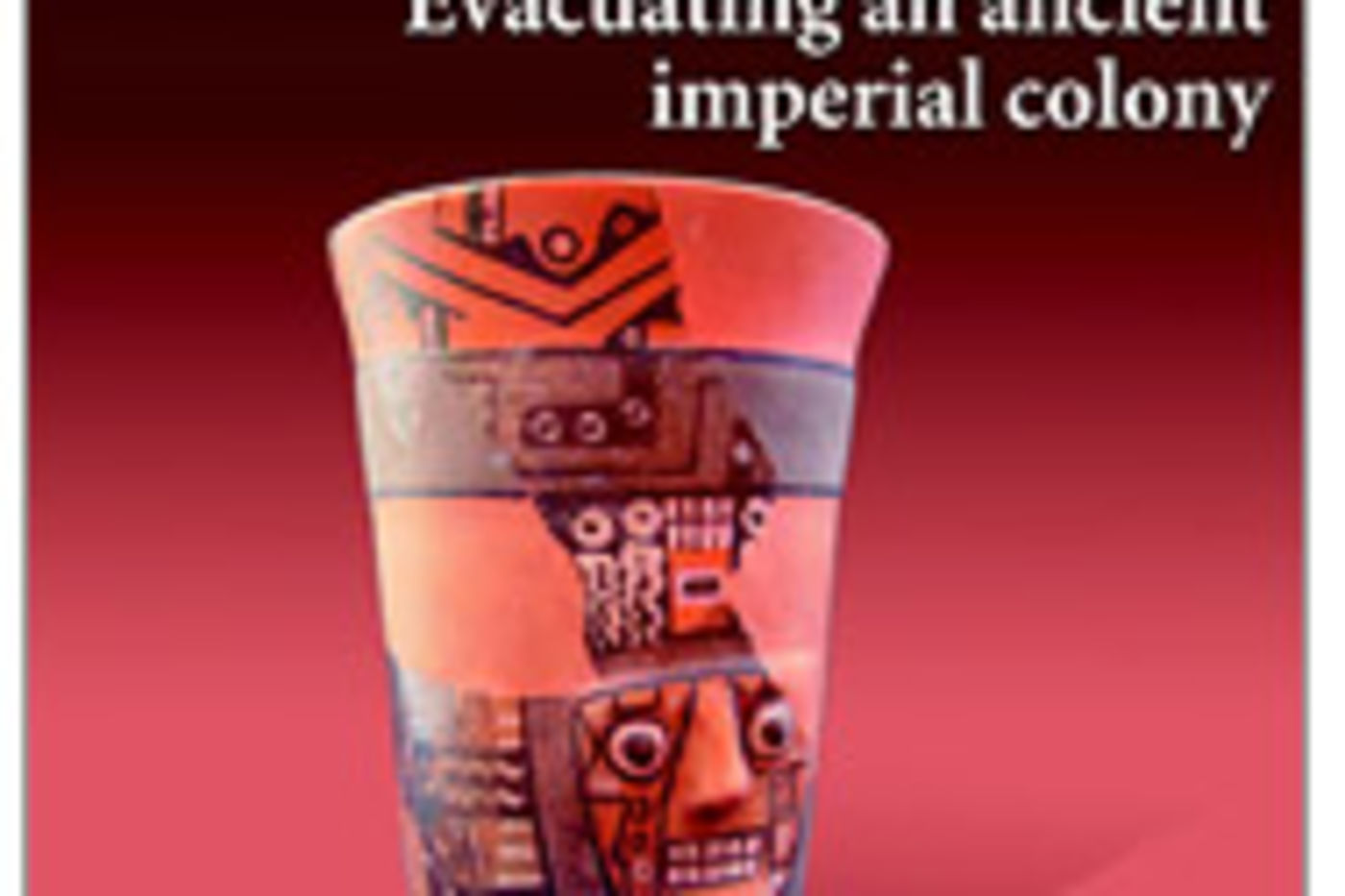 | 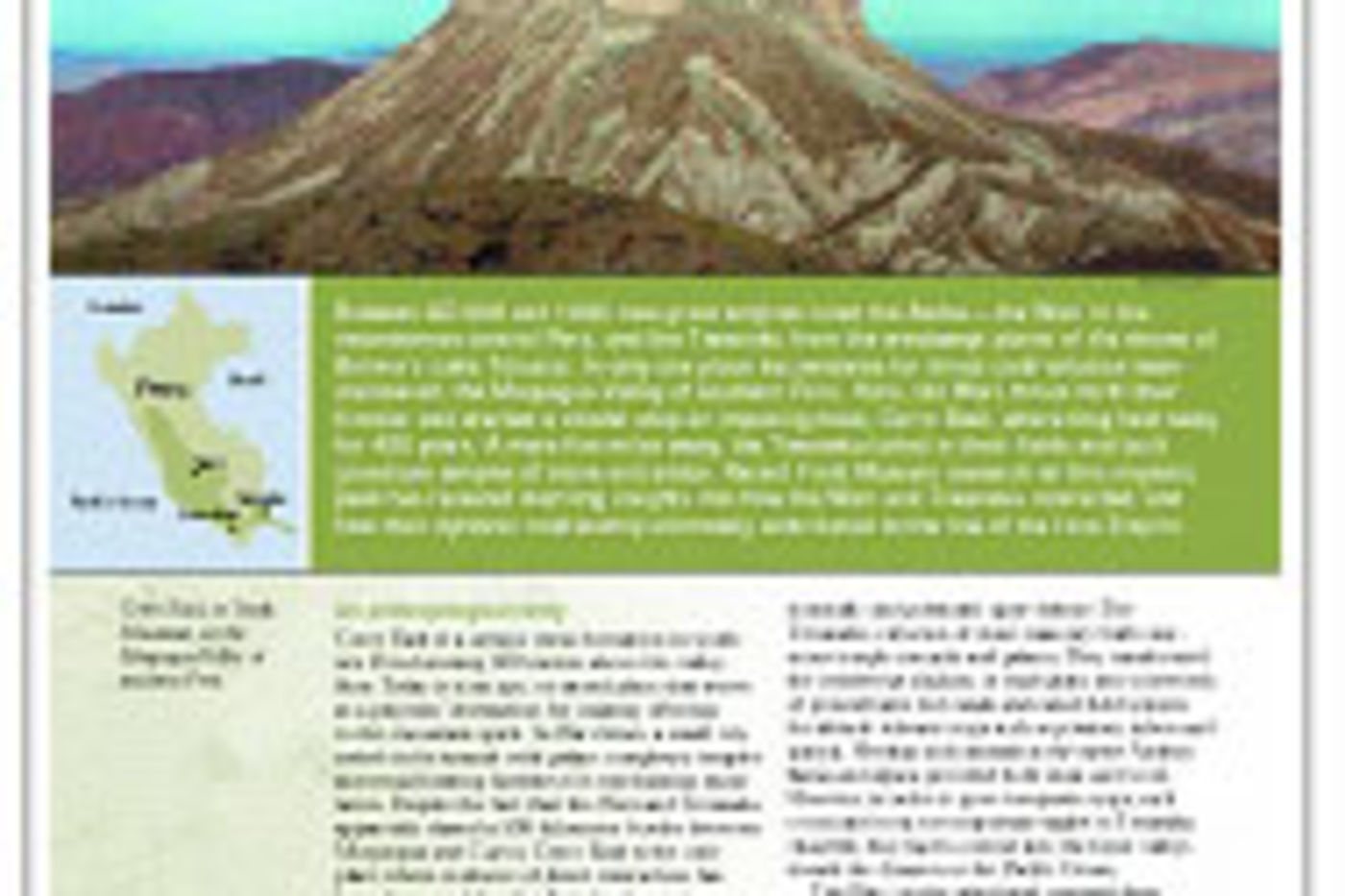 | 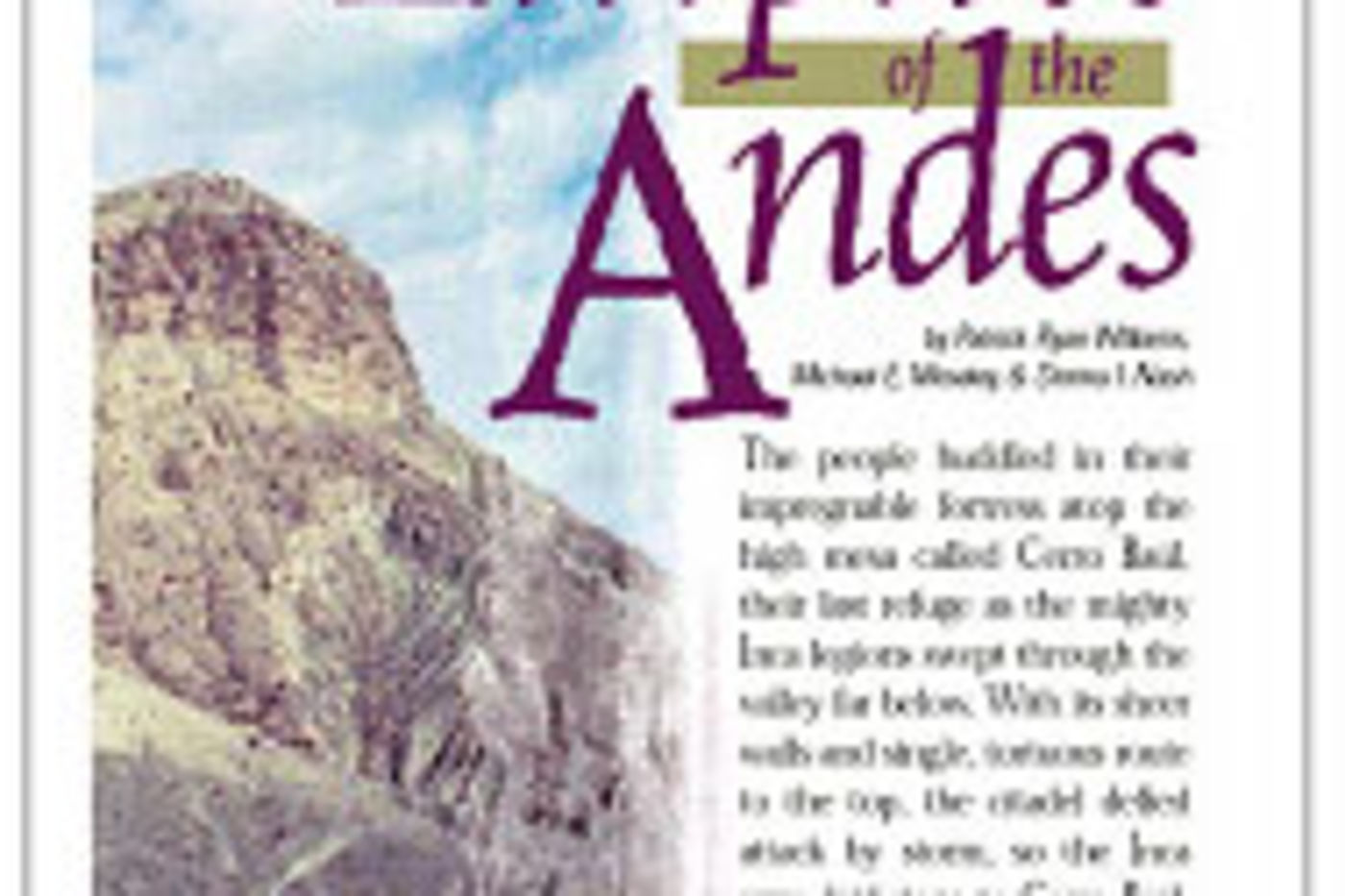 |
|---|---|---|
| Evacuating an Ancient Imperial Colony | Empires of the Andes | Clash of the Andean Titans |
GRANT PROPOSALS
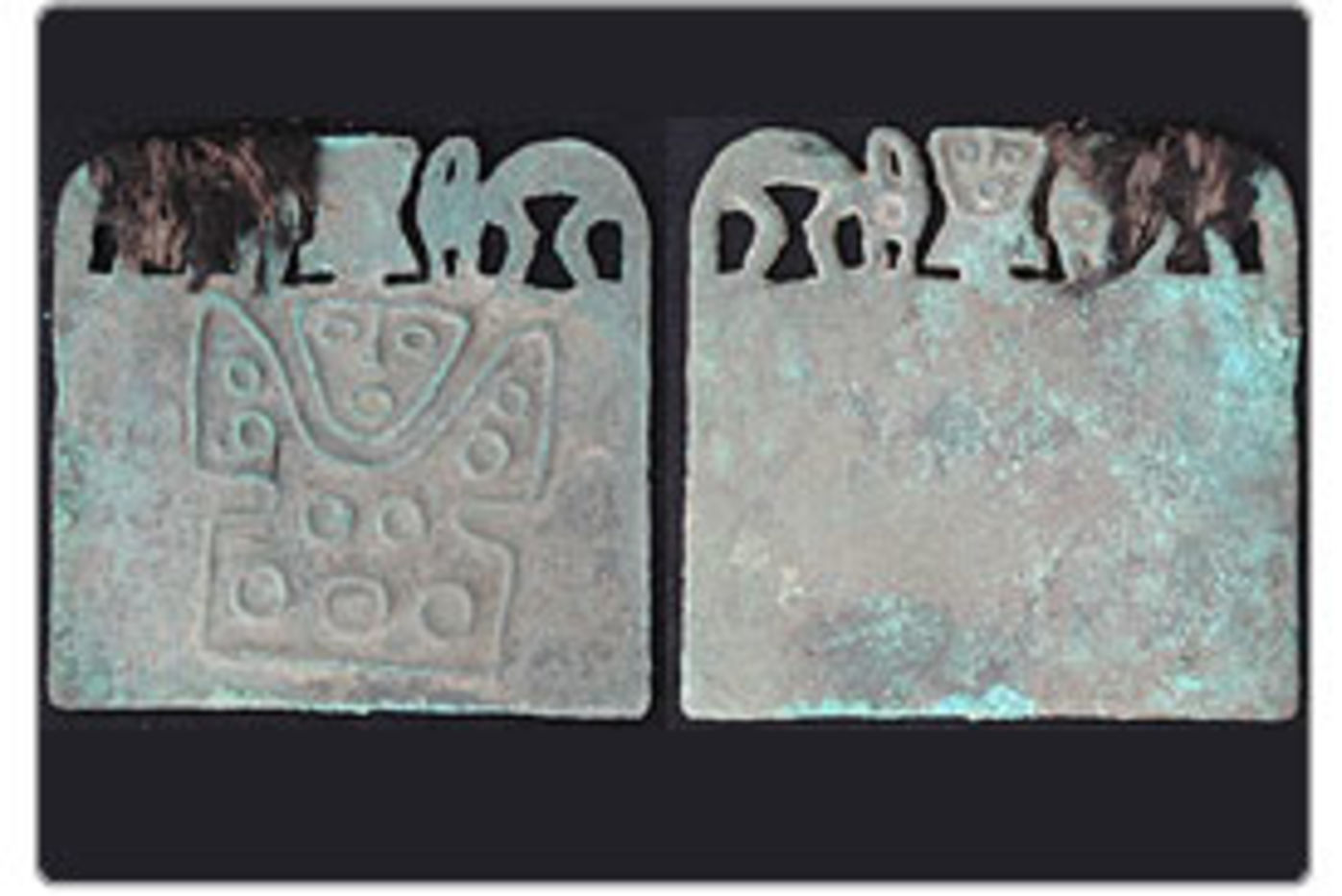 | 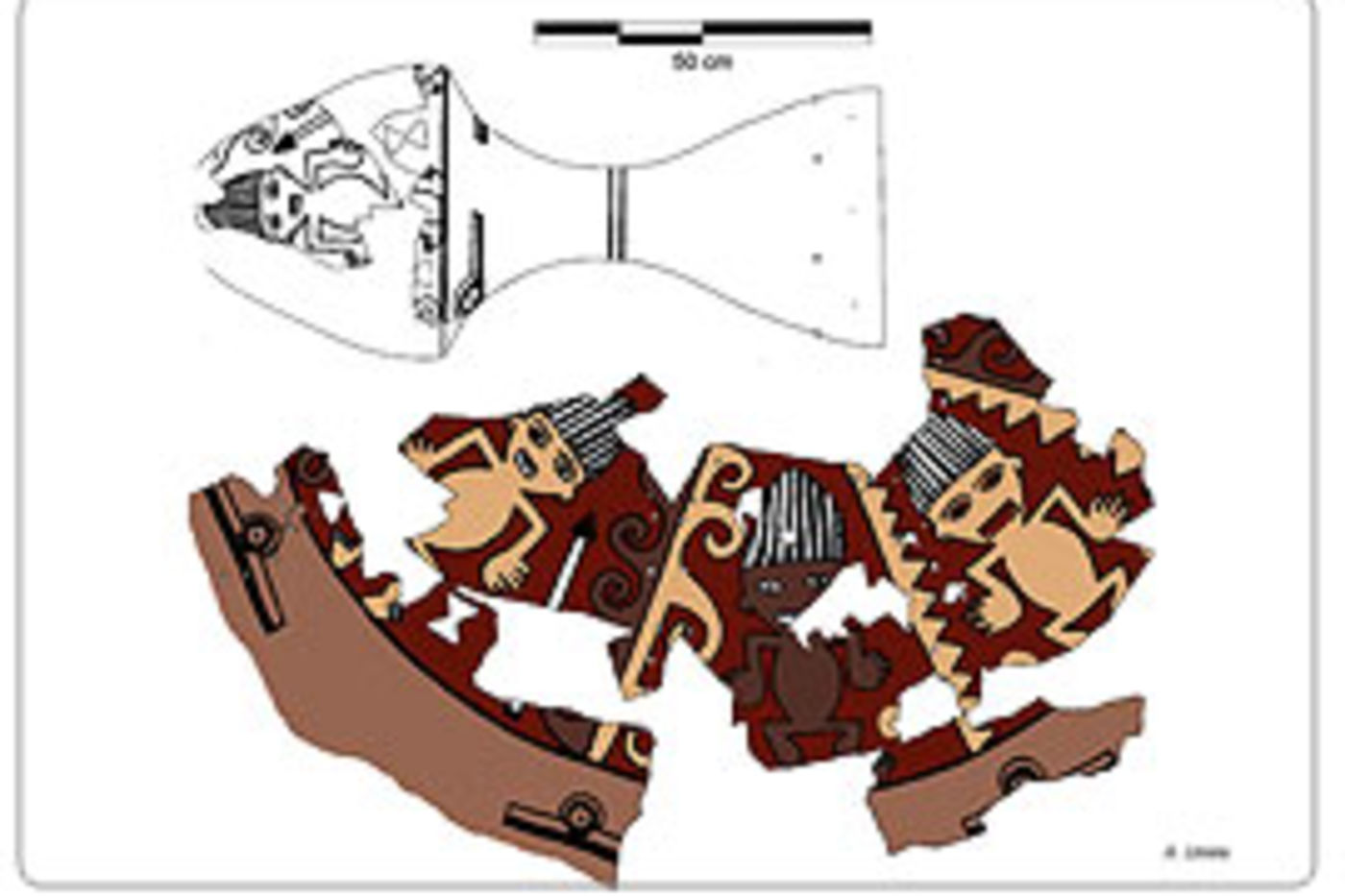 |
|---|---|
| NSF Grant Proposal (2001 & 2002) | NEH Grant Proposal (2004 - 2006) |
FIELD REPORTS